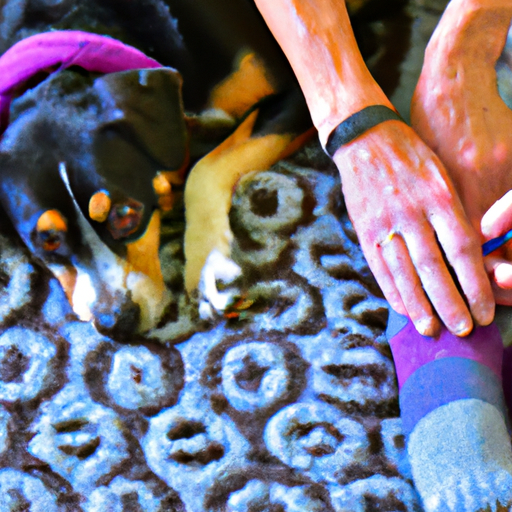Introduction: Understanding Your Dog’s Paws
You may have noticed that your canine companion’s paws often feel cold to the touch, even if they’re not exposed to frosty temperatures. This can be alarming, especially if you’re not familiar with the unique physiology of dogs. But before you rush your pet to the vet, let’s delve into some key reasons why your dog’s paws may be cold.
The Anatomy of a Dog’s Paw
Dogs’ paws are much more complex than they appear. They are designed to withstand various extreme conditions. Here’s a simple breakdown for better understanding:
- Pad: This is the thick, cushion-like part that you often see touching the ground. It’s made of adipose tissue which insulates against cold and absorbs shock.
- Digital Pads: These are the four smaller pads located on each paw. Their function is similar to the pad.
- Dewclaw: This is the small claw located on the inner side of the paw. It doesn’t touch the ground but helps in gripping objects.
- Claws: These are the dog’s nails. They provide traction and allow dogs to dig or scratch.
| Part of Paw | Function |
|---|---|
| Pad | Insulates against cold, absorbs shock |
| Digital Pads | Similar function to pad |
| Dewclaw | Helps in gripping |
| Claws | Provides traction, allows digging |
Why Your Dog’s Paws Feel Cold
There are several reasons why your dog’s paws might be cold:
- Normal Body Functioning: Dogs regulate their body temperature differently than humans. Their paws have a network of veins and arteries that help conserve heat. This can make their paws feel colder than the rest of their body.
- Cold Weather: If your dog has been outside in cold weather, their paws will obviously feel cold. This is why it’s important to protect your dog’s paws in winter.
- Health Issues: Sometimes, cold paws can indicate health issues like poor circulation or hypothermia. If your dog’s paws are consistently cold and they’re showing other symptoms like lethargy or loss of appetite, it’s time to consult a vet.
How to Protect Your Dog’s Paws
Here are some tips to keep your dog’s paws warm and safe:
- Invest in dog boots or paw wax to protect against cold surfaces.
- Limit outdoor time during cold weather.
- Keep your dog’s paws clean and dry to prevent fungal infections.
- Regularly check for signs of injury or illness.
FAQ
Q: Why do my dog’s paws feel cold even when it’s not winter?
A: Dogs have a unique system of blood vessels in their paws that help regulate their body temperature. This can make their paws feel cold even in normal weather.
Q: Should I be worried if my dog’s paws are cold?
A: If your dog’s paws are cold but they’re behaving normally, there’s usually nothing to worry about. However, if they’re also lethargic, not eating, or showing other signs of illness, consult a vet.
Q: How can I protect my dog’s paws from the cold?
A: You can use dog boots, paw wax, and limit their outdoor time in cold weather. It’s also important to keep their paws clean and dry.
Remember, you are the primary caregiver for your dog, and knowing about their physiology, potential issues, and preventive measures makes you more equipped to ensure a healthy, comfortable life for your furry friend.



